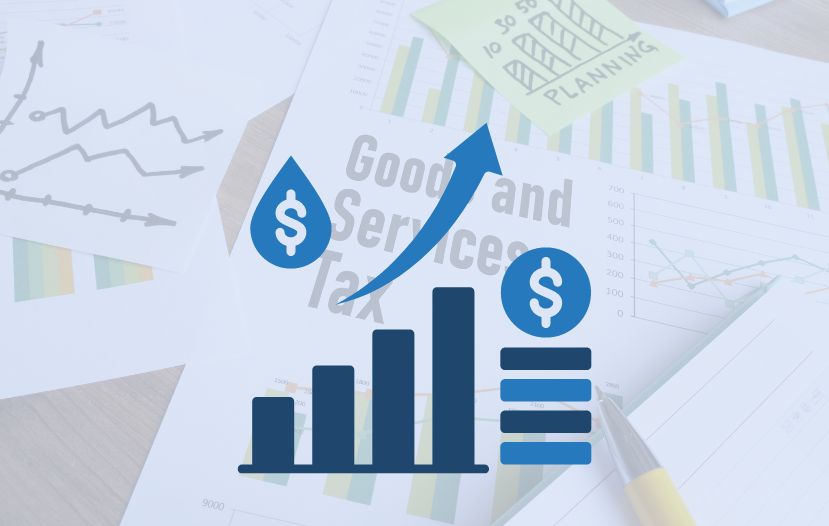Why is GST considered a boon for the Indian economy? Find out the advantages of GST and how it transformed businesses and our taxation system.

The positive change the Goods and Services Tax (GST) brought around to the tax code in India has been commendable, to say the least. In 2017, GST was introduced to replace the fragmented indirect tax regime with a single tax. Businesses were happy to adopt this welcome change from dealing with the multiple indirect taxes that often cascaded with one another, as it meant less administrative work and complexity. Let us walk down memory lane and see how GST has benefited the economy.
Before GST, we saw businesses go through rampant “tax on tax” violence! This just means, businesses faced a complex web of indirect taxes, which led to multiple layers of taxation on the same goods or services. This cascading effect did nothing to help the businesses or the consumers, as there was a manifold increase in costs.
GST did away with this issue by imposing a tax only on the value-added at each stage of the production and distribution process. This also meant that businesses can now claim input tax credit (ITC) for the taxes paid on inputs used in their operations, which neutralizes the impact of taxes on the output.
GST also increased the threshold limit for registration. Let us explain. The pre-GST era saw businesses with a turnover exceeding a certain threshold required to register for multiple indirect taxes. A not-so-complex task for large corporations, but quite a hassle for small businesses with limited resources.
GST introduced a higher threshold limit for registration, which exempted small businesses with a turnover below Rs. 40 Lakh for goods and Rs. 20 Lakh for services. This has reduced the burden on smaller businesses to comprehend and comply with the complex tax requirements.
The Composition Scheme offered under GST serves as another measure of financial relief for small businesses. Under the Composition Scheme, businesses with a turnover less than Rs. 1.5 Crore is required to pay a fixed percentage of their turnover as tax, regardless of their tax liability.
Small businesses are often unable to maintain detailed records of their transactions and hence, are the greatest beneficiaries of this measure..
With GST came the introduction of simplified online procedures for registration, return filing, and other tax-related activities.
GST has been successful in bringing all tax-related activities into a centralized online portal. Businesses can register for GST, file returns, pay taxes, and access information related to their tax liabilities through this online portal.
The online portal has made interaction between businesses and tax authorities more accessible to solve disputes. Corruption and harassment have been on a decline as a consequence of this measure.
The number of returns that were required to be filed in the previous tax regime has been dramatically reduced under GST. About 11 returns are required under GST. But, the good news is, that only four of these are considered essential for regular taxable persons.
The primary return, GSTR-1, serves as a record of all sales invoices and related documents issued during a given tax period. This return is a detailed overview of a business's sales transactions and helps with the reconciliation of input tax credits. The GSTR-2A and GSTR-2B returns are automatically generated by the GST system based on the information provided by suppliers. These returns give a summary of input tax credits that are available to be claimed. And finally, the GSTR-3B return is a consolidated summary that includes information on sales and input tax credits.
Specific provisions for e-commerce operators have been introduced under GST. They have provided clarity and uniformity in the taxation of online transactions.
GST has addressed the issues of earlier complex compliance by introducing a common set of rules for e-commerce operators. And now, it is much easier for e-commerce businesses to operate across India.
The multiple taxes and restrictions in the pre-GST regime did nothing to help the transportation costs and flow of goods. GST has eliminated these barriers by establishing a uniform tax rate for the interstate movement of goods. Businesses have better logistical operations, along with reduced transportation costs and faster delivery speeds.
Moreover, GST has led to the development of a more integrated logistics network in India, with businesses establishing distribution centers in strategic locations.
GST has brought many businesses from the unorganized sector into the formal tax net by making it easier for them to register and comply with tax regulations. Now, there are fewer instances of tax evasion and a fairer market for all. This is all thanks to an easier-to-access online compliance system under GST. Not to mention, there is an added layer of transparency and accountability for these businesses as they are encouraged to operate within the formal economy.
The Goods and Services Tax has been a milestone in fine-tuning India's taxation system.
The benefits of GST are many and they extend to businesses and consumers alike. We have an increased purchasing power and are spoilt for choice as the market for quality products has expanded because of GST. While GST may have some challenges during its implementation, its overall impact on the Indian economy has been overwhelmingly positive. And just like the GST, the Uniqey by JJ Tax App comes with multiple benefits for businesses and consumers alike! Easy GST registration, invoice preparation, and GST Refunds are just a few of the benefits the app has to offer! Download Now and let us help you enjoy the advantages of GST today.

